Fujifilm X-A2 Mirrorless Camera Review
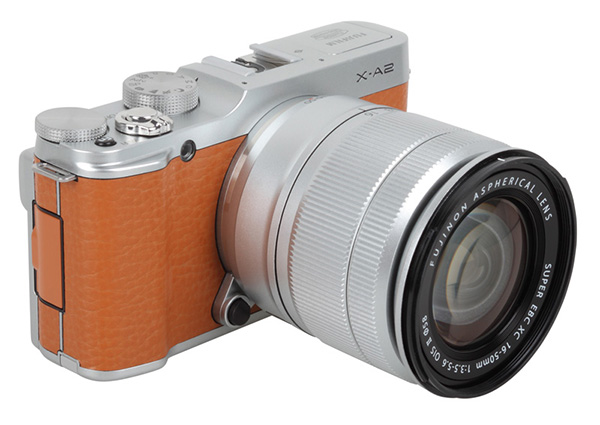
[Editor's Note: Lab test and comments are by Betternet, Shutterbug’s TIPA-affiliated testing lab. TIPA (www.tipa.com) is a worldwide association of photo and imaging magazine editors. Shutterbug is the sole US member of the association, and Editor at Large George Schaub serves as a member of the Technical Committee. Please click on the Image Tech tab on the home page for more camera review tests.]
The Fujifilm X-A2 mirrorless compact system camera, the successor to the X-A1, uses a standard APS-C sized image sensor rather than the X-Trans CMOS II sensor found in other Fujifilm cameras like the X-T1 and X-E1. Nevertheless, the new Fuji X-A2 gets the most out of this sensor technology and showed a very good performance in our tests.
Just like the X-A1, the X-A2 uses an LCD monitor as viewfinder and menu control center. The monitor can be flipped upwards (by nearly 180 degrees) and downwards (by about 45 degrees), but can't be rotated to the side. This works like the tiltable screen of the X-A1, but the X-A2 uses a slightly different mounting system for its LCD that allows the user to move the screen a bit more upwards, allowing selfie shots. The screen has a resolution of 920,000 RGB dots.
The Fujifilm X-A2 mirrorless camera sells for $549 with a 16-55mm kit lens. Let's take a closer look.
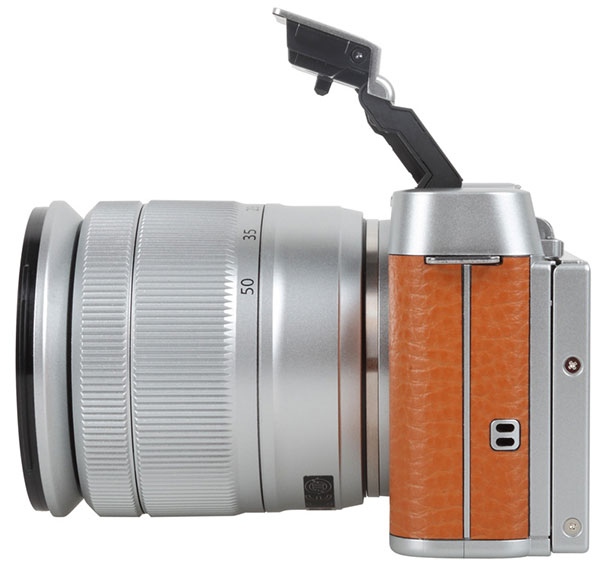
The more important feature in the Fuji X-A2 is the new AF system, which is faster than the A1. The new “eye detection AF” supports standard face detection and will focus directly on the subject’s eyes when making portraits (the eye focus detection is graphically shown on the LCD screen).
The “Multi AF” feature keeps up to nine elements in focus, also shown by a graphical representation on the screen. Just like all X-cameras, the X-A2 uses optical images stabilizer systems in the lenses to prevent photos and videos from showing image blur.
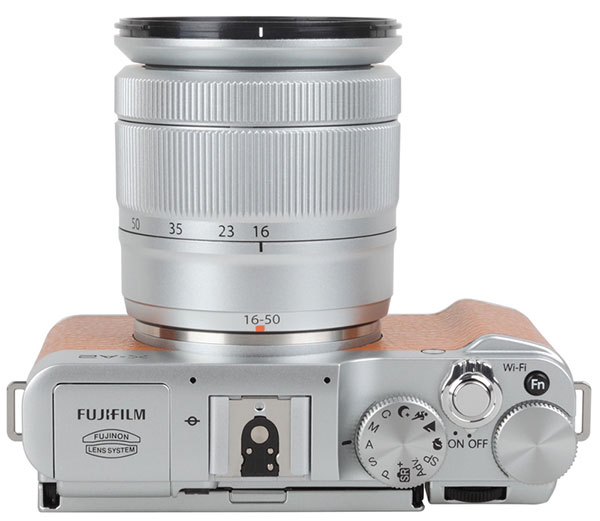
The camera offers a Wi-Fi interface for image data transfer to or to receive GPS data from a smartphone or tablet. The GPS data is copied into the EXIF information of the X-A2 files. Using the “Fujifilm Camera App” for iOS and Android, however, doesn't allow remote control of the X-A2.
Camera handling is easy with a clearly structured menu system and a standard 4-way control field. Right above this control field the camera has a setup dial to change image parameters such as shutter speed and aperture size. A second dial on top of the camera allows the user to change additional parameters and can be easily reached with the thumb of the right hand.
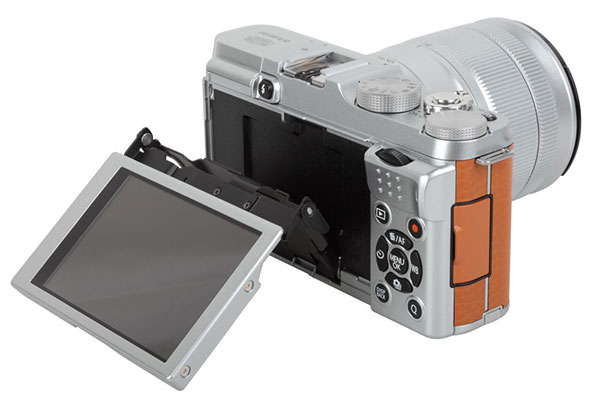
The mode dial is also located on the top and offers standard exposure modes, plus scene, effect, and filter modes. The camera offers film simulation settings including the new “classic chrome” effect, which creates image colors sporting a very “analog look.”
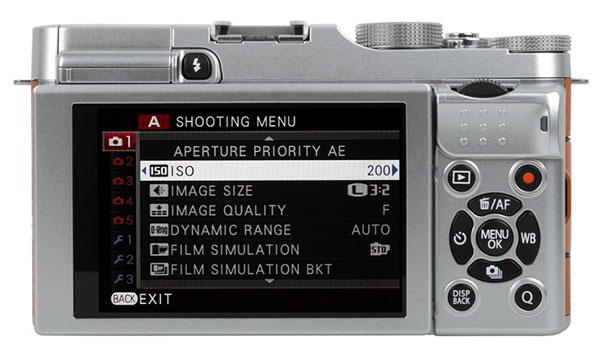
Comments on Image Quality:
Color: The color reproduction of the Fujifilm X-A2 is good. Many color errors are on a low level, but some green, red, yellow and blue colors are shifted due to high saturation, which we noted as being quite high for a CSC (compact system camera). The mean saturation of 115.5 percent is on the same level as the color saturation shown by most compact cameras.

The white balance system showed a slight shift into the yellow and green direction. This is noticeable in the bright background of the portrait shot and the little yellow touch in the neutral gray of the test box shot. Skin tones have a shift into the yellow and orange area. Even though the camera showed highly saturated reproductions in all our test shots, the differentiation of the colors is very good.
Sharpness: The resolution results of the X-A2 are extremely high and a little better than the results from the X-A1. The new camera reproduced the test chart with 3110 of 3264 lines per picture height. But the sharpness enhancement by the image processor of the X-A2 is very intense. ImaTest showed a “clipping warning” because contrast lines are exaggerated and show a double contour effect due to this very intense electronic sharpening. In images of buildings, for example, this effect may be visible, but test images show that it stays on a fully acceptable level. Most users will rate these effects as “very crisp and clear.”

Noise: While the test results of sharpness and color reproduction of the X-A2 are basically comparable to the X-A1 or are only slightly better, the noise results of the new camera were extremely good. Luminance noise keeps on a low level between ISO 200 and ISO 1600. At ISO 3200 the pixel noise level climbs and will show color noise artifacts or image artifacts, which are produced by the combination of noise and smoothing filtering of the images.

The dynamic range results of the X-A2 are very good for a camera with a standard APS-C sensor. The new Fujifilm achieved a maximum of 11 f-stops and keeps the high level up to ISO 1600; at higher ISOs the dynamic range results dropped drastically.
Video Format and Handling
The Fujifilm X-A2 offers Full HD recording with 1920 x 1080 pixels and a maximum of 30 frames per second in progressive image mode. Higher frame rates are not allowed, even if the video resolution is reduced to 720p. There are no further quality or bit rate settings for videos. The video settings are “hidden” on the fifth file index tab in the menu and just offer the two resolution settings (1080p and 720p). Video clips are saved as MOV files with H.264 compression.
The LCD screen doesn't offer markers for the 16:9 field of view in standard mode, so the user will not see the video field of view until the additional record button on the back of the camera is activated. (The 16:9 field of view is also shown when image mode is set to 16:9 format, but most photographers will shoot still images with 3:2 aspect ratio. (Many digital cameras allow users to mark the 16:9 frame, even in standard photo mode).
Sound level can't be controlled and a microphone jack is missing. The sound is recorded with two stereo microphones on the top of the camera and corresponds to the quality level of the Fujifilm X-A2's videos.
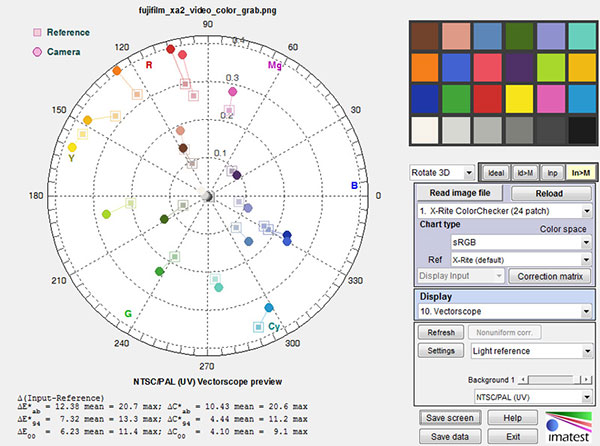
Comments on Video Quality
The video quality is still the Achilles Heel of Fujifilm cameras. The X-A2 reproduced the ISO 12233 test chart with a maximum resolution of 627 lines per picture height (in Full HD mode with 1080 lines per picture height). Due to the very soft, low resolution images there are virtually no aliasing or moiré effects noticeable.
The color reproduction is good, albeit slightly over-saturated and shows the same small shift into the yellow area of the color space as we saw in the still images, especially for brighter or nearly white neutral tones.
The noise results are on a good level, but dynamic range is very low. The camera achieved a maximum of 7.13 f-stops in video and created videos with very hard contrast.
Pro:
+ Very compact system camera
+ Swivel LCD
+ Built-in Wi-Fi
+ Fast AF system
Con:
- Missing optical viewfinder for comfortable image control under bright light conditions
- No remote control by smartphone app, even though the camera offers a Wi-Fi interface

















































